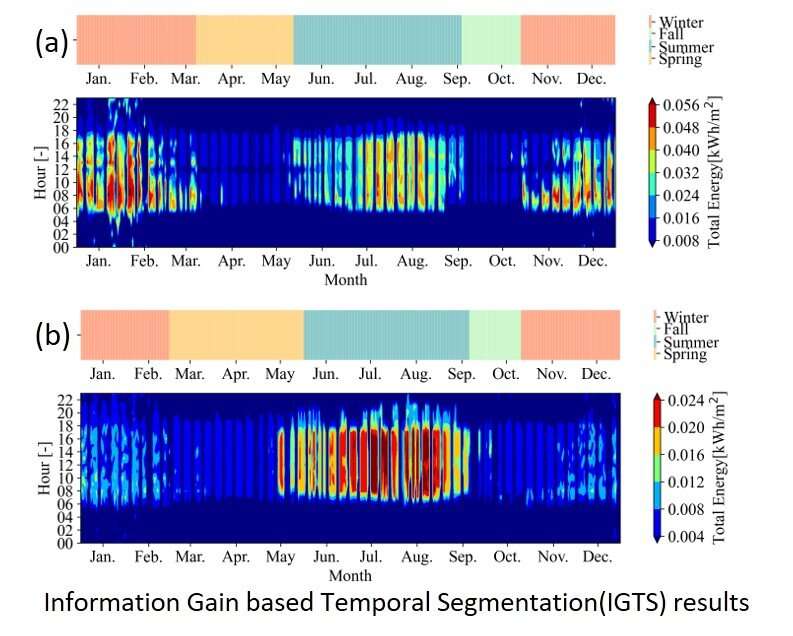Building an energy consumption diet: Using real-time power usage data integrated with weather information

In recent years, many countries have been competing to develop various platforms and systems that provide services directly to the general public using ICT solutions, especially big data. Among them, Green Button, an energy data-sharing platform launched by the Obama Administration in 2012, has drawn significant attention.
Green Button is a program designed to provide consumers with online access to their electricity, gas and water consumption data, further allowing them to share such data with reliable third parties only upon their request, thereby creating new value-added services.
Similar to this concept, an AMI (Advanced Metering Infrastructure), which is a smart power metering system designed to provide customers with real-time data on power consumption via two-way communication, can be used to nudges customers to reduce energy consumption spontaneously. As of late August 2022, KEPCO (Korea Electric Power Corporation) completed about 48% of the penetration target for the AMI and plans on completing its penetration project by 2024 in Korea.
However, questions have been raised about whether simply providing real-time power usage data can significantly reduce energy consumption. A technology that can alleviate these concerns has recently been developed in Korea.
The Korea Institute of Civil Engineering and Building Technology announced that its researchers had developed a new technology allowing the data provided by the AMI to be effectively utilized. The research team of the Department of Building Energy Research (Dr. Seung-Eon Lee and Dr. Deuk-Woo Kim) developed a technique for estimating “the daily average of heating & cooling energy use intensity” by integrating the power consumption data provided by the AMI with the real-time outdoor temperature and solar irradiance data provided by the Korea Meteorological Administration.
By using the technique, it becomes possible to extract new information that can be used for the energy performance evaluation of buildings with respect to heating and cooling.
The developed technique is operated based on the information content (entropy) embedded in weather and power time-series data. Three weather transitions with the largest information content (from winter to spring, from spring to summer, and from fall to winter) are first identified, and the four seasons are subdivided into with respect to each building. The daily average of heating & cooling energy use intensity is then estimated based on the number of operating days and heating & cooling energy consumption for each season.
For verification, the results estimated by the algorithm were compared with detailed measured data obtained from 12 buildings for business purposes. The coefficient of determination (R2) between the estimated and measured results was 0.976, confirming the ability of the algorithm to more quickly and accurately identify high-energy-consuming buildings at the regional or city level.
Meanwhile, properly managing high-energy-consuming buildings is critical to achieving carbon neutrality in the building industry. To this end, it is necessary to identify high-energy-consuming buildings through relative comparison of energy consumption among buildings within a region or city of interest. For that, It is important to properly identify high-energy-consuming buildings while considering the unique characteristics of individual buildings, including their operating schedules, to be sure, but it is not an easy task to collect such information.
These challenges can be mitigated by the developed technique. For example, it is possible to come up with strategies for improving energy efficiency, especially those that best suit each building type and time window, by integrating the operation of high-energy-consuming buildings, i.e., places of business run by high-energy-consuming business operators, with such data as described above during seasonal periods, such as summer and winter.
Indeed, the launch of Green Button led to a reduction of power consumption by 15 million kWh, as well as a reduction of carbon dioxide emissions by 22.9 million tons in the State of California, US.
The ultimate goal of this invention is full automation. The fully automated system can implement the entire process without any human intervention, from collecting data to applying logical algorithms to store, analyze, and evaluate the collected data.
The research team plans to discuss the application of the technique to the “Public Buildings Energy Information System” currently run by the Korea Authority of Land & Infrastructure Safety. Given that public buildings are required to be equipped with the AMI, the developed technology, once verified for performance and further advanced, will be used as an effective tool to identify and manage high-energy-consuming buildings in a systematic manner.
Dr. Seung-Eon Lee said, “Convergence between energy and ICT solutions benefits consumers in many ways, and this technology will make it possible to identify and assess high-energy-consuming buildings in a reasonable manner.”
The study is published in the journal Sustainability.
More information:
Ki Uhn Ahn et al, Temporal Segmentation for the Estimation and Benchmarking of Heating and Cooling Energy in Commercial Buildings in Seoul, South Korea, Sustainability (2022). DOI: 10.3390/su141711095
Provided by
National Research Council of Science & Technology
Citation:
Building an energy consumption diet: Using real-time power usage data integrated with weather information (2023, July 5)
retrieved 5 July 2023
from https://techxplore.com/news/2023-07-energy-consumption-diet-real-time-power.html
This document is subject to copyright. Apart from any fair dealing for the purpose of private study or research, no
part may be reproduced without the written permission. The content is provided for information purposes only.
For all the latest Technology News Click Here
For the latest news and updates, follow us on Google News.

